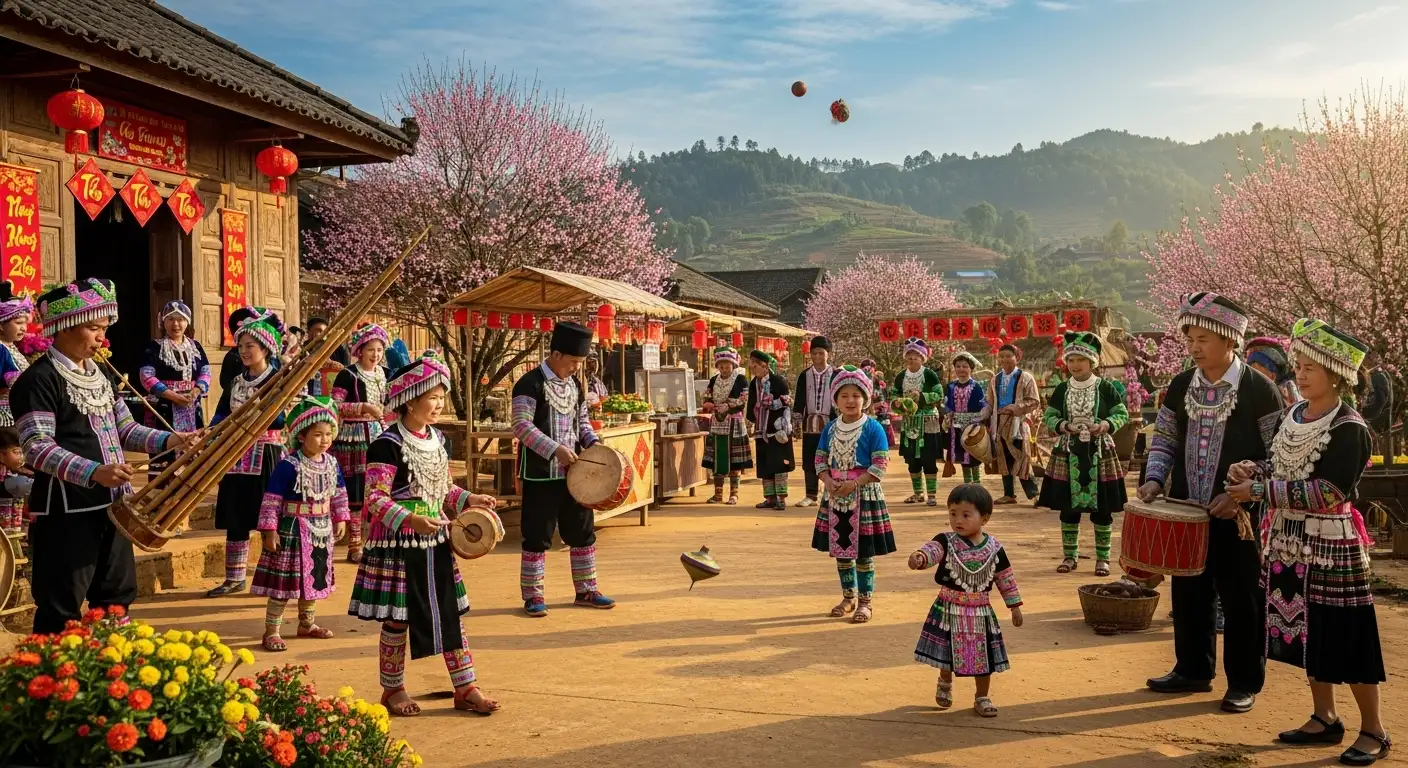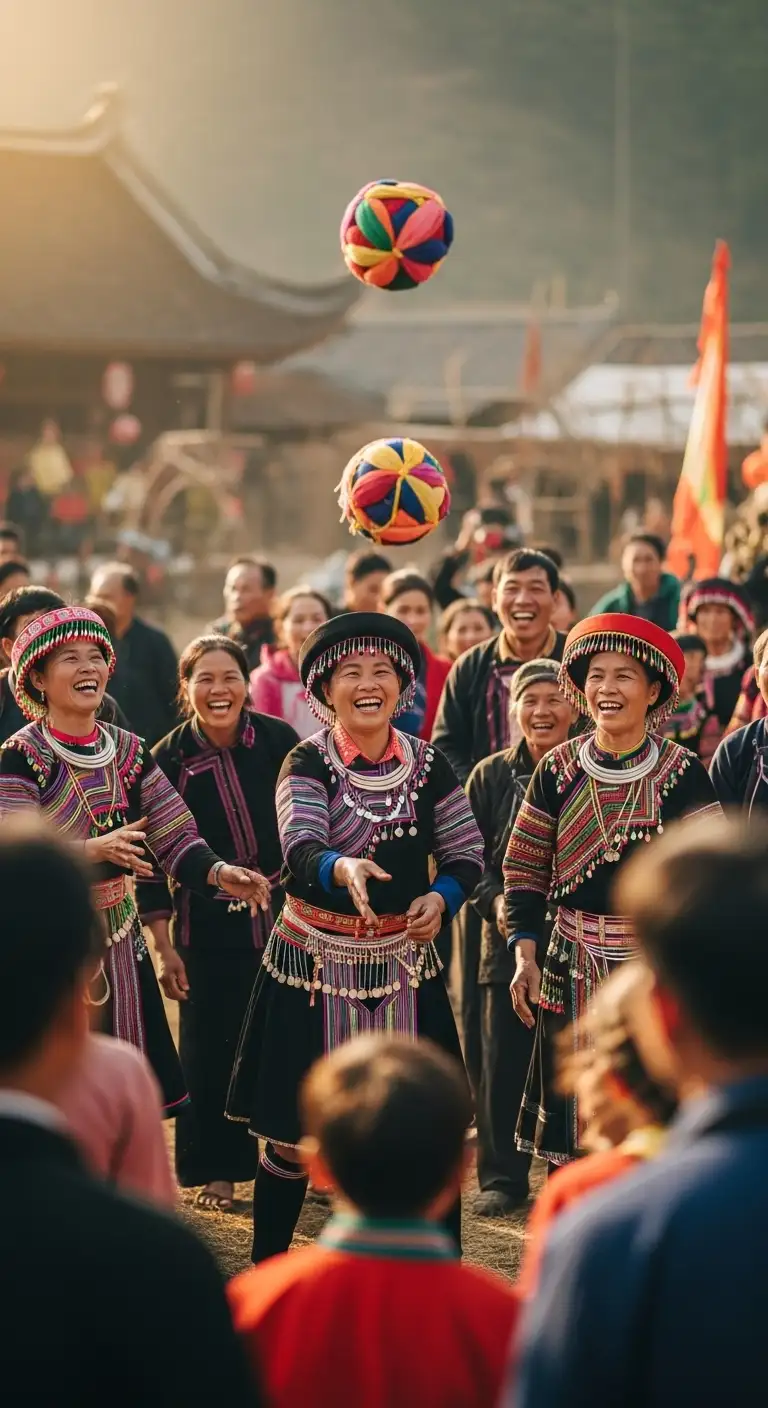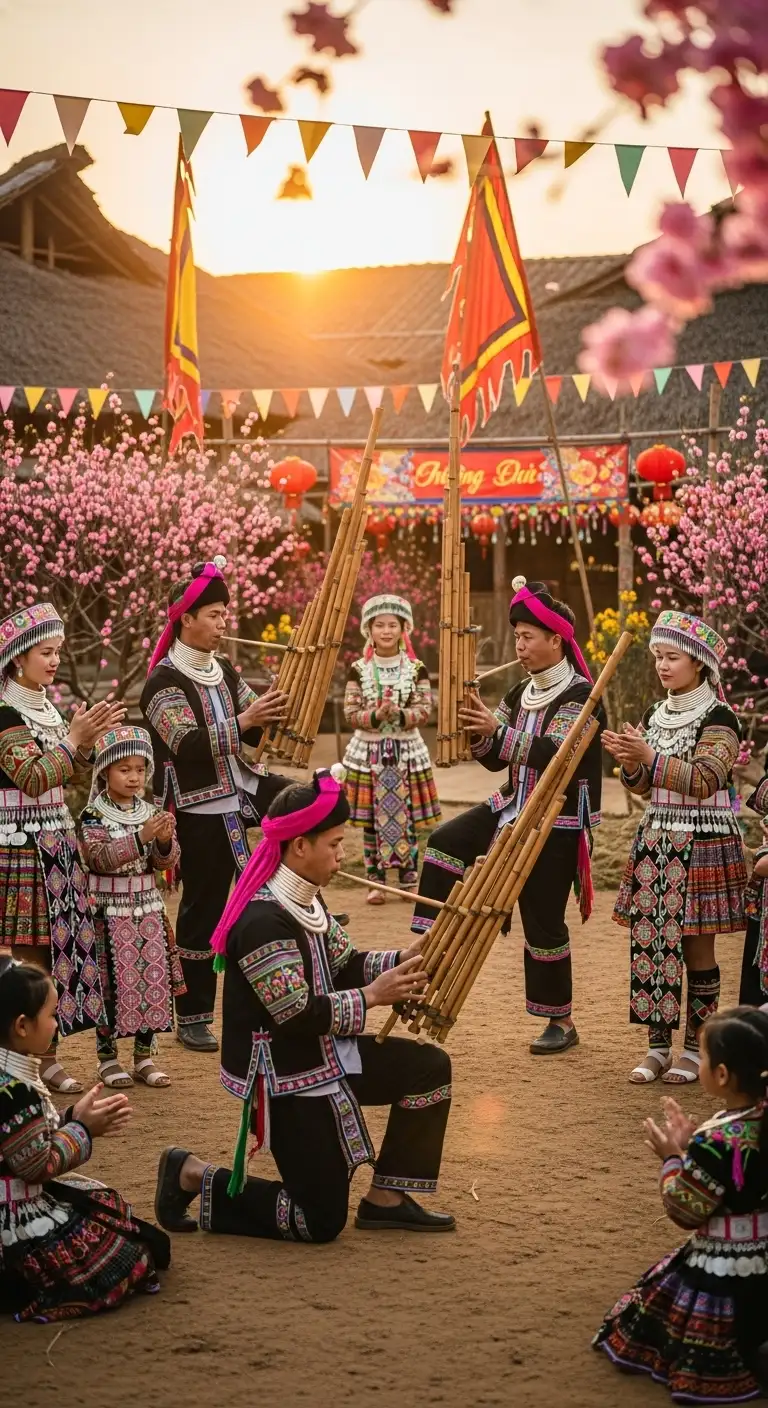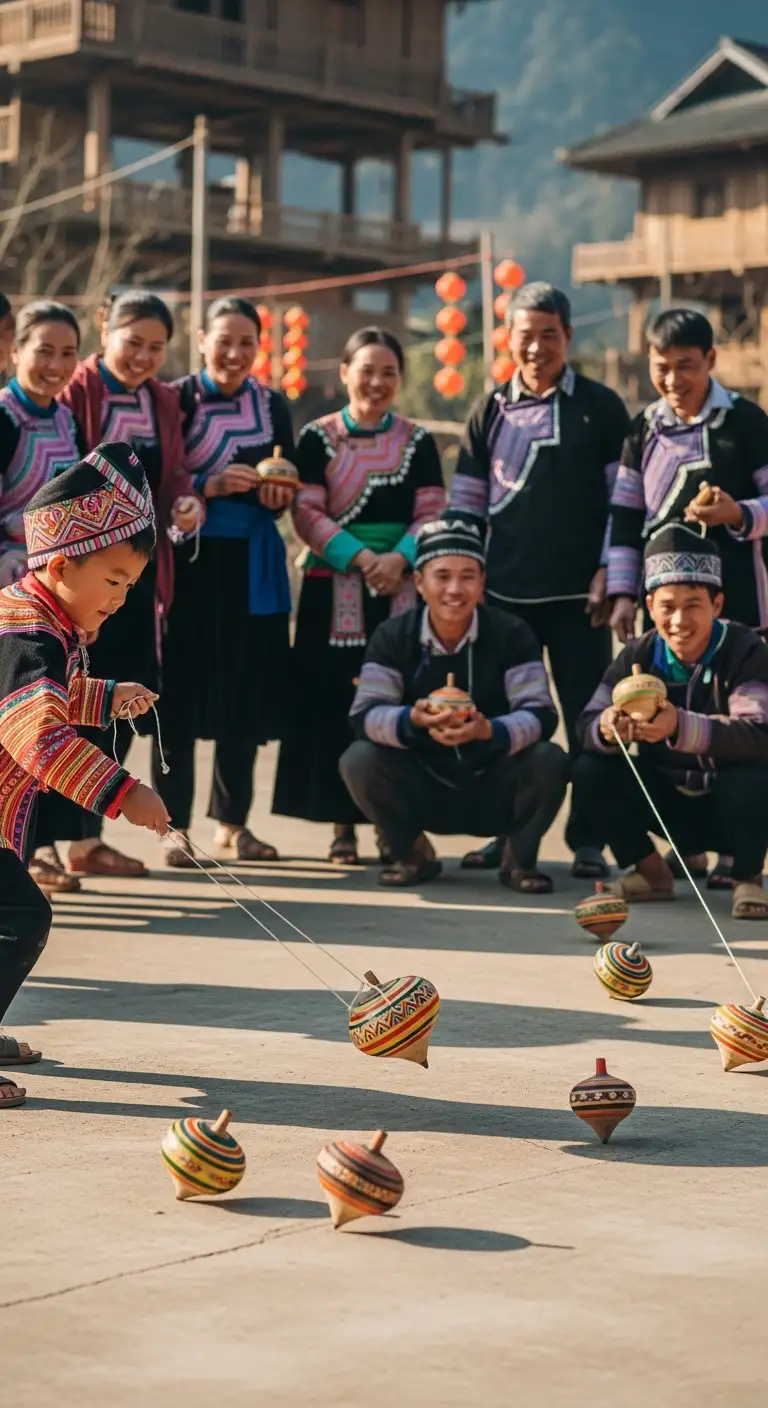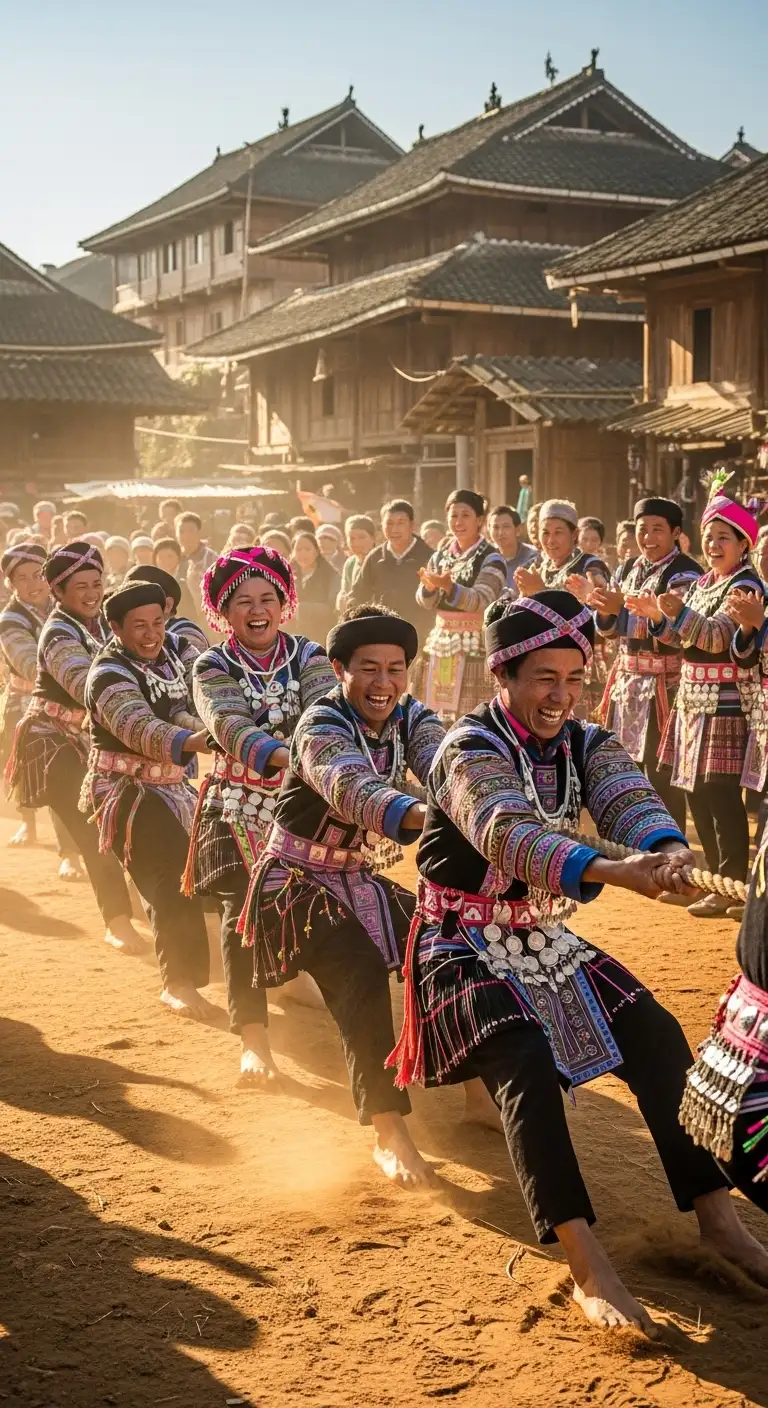Quick Facts
| Data Field (Title) | Content | Icon/Note |
|---|---|---|
| Official Vietnamese Name | Lễ hội Tết người Mông | Refers to the H'mong Ethnic New Year Festival. |
| Location | Celebrated across the Northern mountainous provinces of Vietnam (e.g., Hà Giang, Lào Cai, Sơn La, Mộc Châu, Điện Biên). | H'mong people are one of Vietnam's largest ethnic minority groups. |
| Date | One month earlier than the Vietnamese Tết | Traditionally begins on the 30th day of the 11th Lunar Month (roughly late December to early January), but celebrations can last up to 15 days. |
| Significance | A time for ancestral worship, family reunion, and spiritual renewal; it marks the end of the harvest and the start of rest before the new agricultural season. | |
| Key Symbol | The Khèn (Panpipe), central to H'mong music, dance, and courtship. |
I. Overview and Unique Timing
The "Early Tết"
The H’mong New Year Festival is a vibrant, deeply spiritual, and colorful celebration distinct from the main Vietnamese Lunar New Year (Tết Nguyên Đán). It is often referred to as the “Early Tết” as it traditionally begins about one month earlier, following the H’mong people’s specific lunar calendar and agricultural cycle.
This is the only major holiday of the year for the H’mong, serving as a time of gratitude for the past harvest, a break from continuous hard work, and a moment to honor the spirits and ancestors before preparing for the next season.
The Sacred Start
The New Year is not heralded by midnight fireworks, but by the first crowing of the rooster on the morning of the first day, symbolizing a new dawn and the start of a year of discipline and order, led by the men of the household.
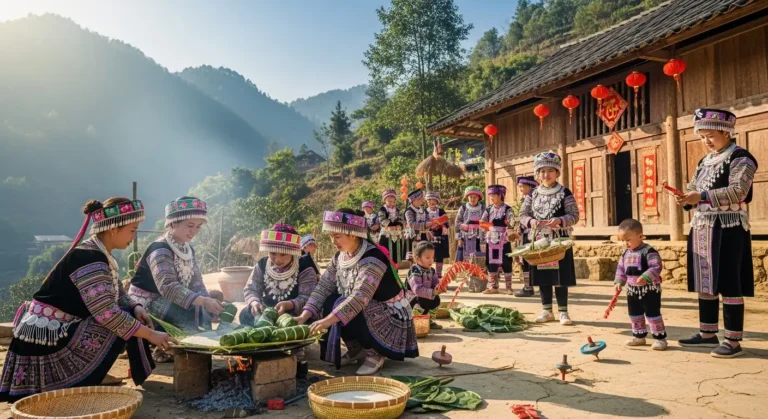
II. Customs and Rituals
The celebration blends solemn family rituals with lively community festivities.
1. Family Preparation and Spiritual Cleansing
The Ancestral Altar: Central to every H’mong home, the altar is meticulously cleaned and adorned with symbolic paper sticks, rice cakes (Bánh Giày), and offerings of meat, corn wine, and fruit.
Sweeping Away Misfortune: A significant tradition involves using a green bamboo broom tied with colored threads (red, yellow, green) to ritually sweep away the sickness and bad luck of the old year.
Honoring Tools: All agricultural and production tools (like the corn mill or blacksmith’s forge) are symbolically “consecrated” and wrapped in paper or cloth and placed to rest, showing gratitude for their service throughout the year.
2. Traditional Cuisine
Bánh Giày (Sticky Rice Cake): This round, flat sticky rice cake is an indispensable offering and a symbol of the sun and the moon, representing fertility and gratitude to the heavens.
Mèn Mén (Steamed Ground Corn): A staple H’mong dish, along with meat and corn wine, forms the core of the New Year’s feast.
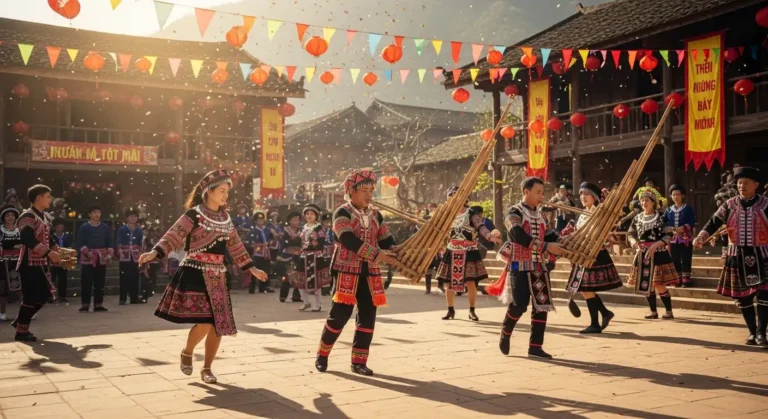
III. Community and Courtship
After the family rituals are completed on the first few days, the celebrations move to the open fields of the villages.
1. The Khèn Dance
The Khèn (a bamboo panpipe) is the soul of H’mong culture. Young men perform mesmerizing, athletic dances while playing the khèn, showcasing their skill, health, and strength—qualities highly valued for survival in the highlands. This music is often used to attract young women.
2. Folk Games
The open-air festivities are dominated by traditional games that encourage interaction, friendship, and courtship:
Pao Throwing (Ném Pao): A gentle game where boys and girls toss a small cloth ball back and forth, a discreet way for young people to seek out a potential lover.
Tug-of-War and Stick Pushing: Displays of strength and community bonding.
Crossbow Shooting and Top Spinning (Tu Lu).
The H’mong New Year is one of the best times for travelers to witness the breathtaking colors of H’mong brocade costumes and experience the deeply rooted traditions of the mountainous regions.
